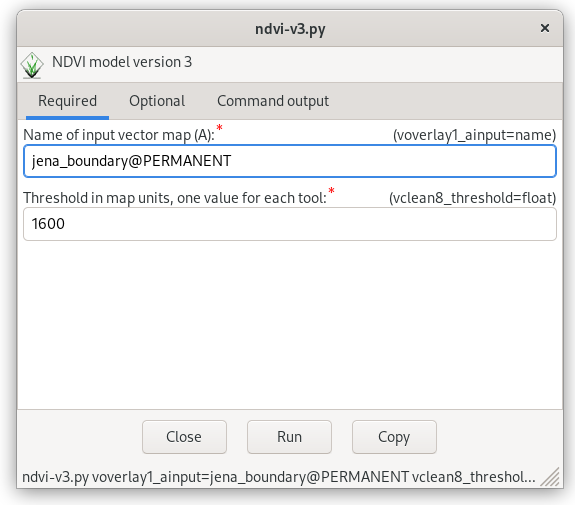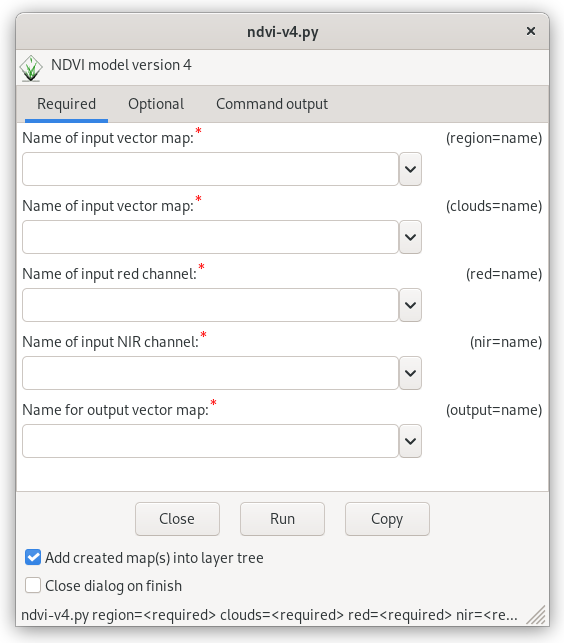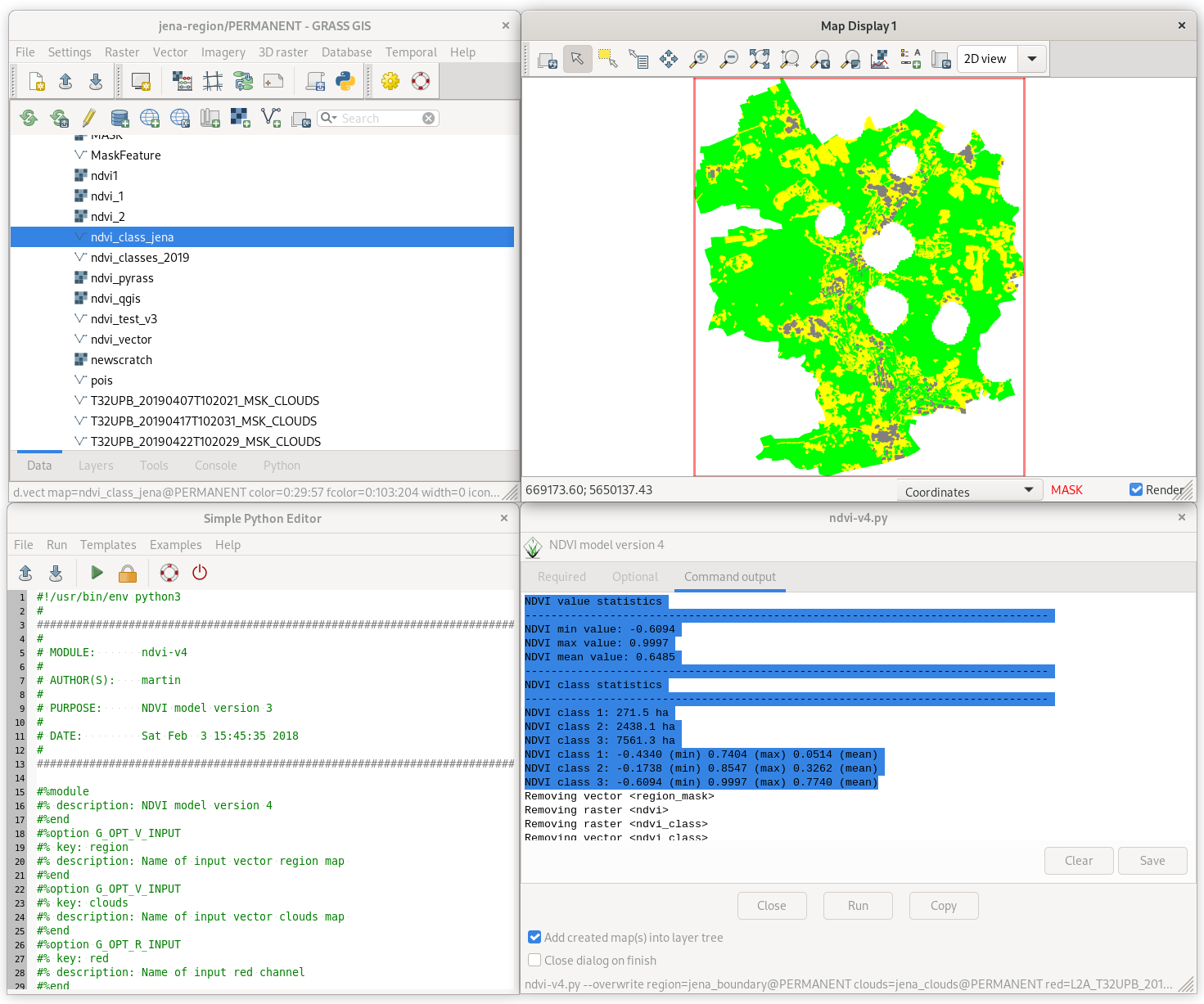Unit 12 - Script User Interface¶
Standard input¶
In the script prepared in Unit 11 - PyGRASS scripting some tools (r.recode,
r.colors) use hardcoded paths to the input files. See code
below (rules option):
Module("r.recode",
overwrite = True,
input = "ndvi",
output = "ndvi_class",
rules = "/home/user/geodata/models/reclass.txt")
Module("r.colors",
map = "ndvi_class",
rules = "/home/user/geodata/models/colors.txt")
Content of input files can be defined as a string object and transfered
to the command via standard input (stdin_). See a sample code
below:
Module("r.recode",
overwrite = True,
input = "ndvi",
output = "ndvi_class",
rules = "-",
stdin_ = "-1:0.1:1\n0.1:0.5:2\n0.5:1:3")
Module("r.colors",
map = "ndvi_class",
rules = "-",
stdin_ = "1 grey\n2 255 255 0\n3 green")
Note that many of GRASS modules allows sending data via standard input
by option value - (dash). In our case the both commands will be
changed to use rules="-" syntax.
Úkol
Define a cleanup routine to remove intermediate data by g.remove tool.
def cleanup():
Module('g.remove', flags='f', name='region_mask', type='vector')
User interface (UI)¶
Let’s improve UI generated by Graphical Modeler in Unit 10 - Python intro.
#%module
#% description: NDVI model version 3
#%end
#%option
#% key: voverlay1_ainput
#% description: Name of input vector map (A)
#% required: yes
#% type: string
#% key_desc: name
#% answer: jena_boundary@PERMANENT
#%end
# %option
# % key: vclean8_threshold
# % description: Threshold in map units, one value for each tool
# % required: yes
# % type: double
# % answer: 1600
# %end

Fig. 78 Generated GUI dialog with voverlay1_ainput option.
Let’s change UI by defining parameters below:
region: vector map defining a computation region (required)clouds: vector map with cloud mask features (required)red: input red channel (required)nir: input nir channel (required)threshold: threshold for removing small areas (optional)output: output vector map (required)
UI definition below.
#%module
#% description: NDVI model version 4
#%end
#%option G_OPT_V_INPUT
#% key: region
#% description: Name of input vector region map
#%end
#%option G_OPT_V_INPUT
#% key: clouds
#% description: Name of input vector clouds map
#%end
#%option G_OPT_R_INPUT
#% key: red
#% description: Name of input red channel
#%end
#%option G_OPT_R_INPUT
#% key: nir
#% description: Name of input NIR channel
#%end
#%option
#% key: threshold
#% description: Threshold for removing small areas
#% answer: 1600
#%end
#%option G_OPT_V_OUTPUT
#%end

Fig. 79 GUI dialog with input options.
In the script input parameters are still hardcoded, eg.
Module("v.overlay",
overwrite = True,
ainput=options["voverlay1_ainput"],
alayer = "1",
atype = "auto",
binput = "MaskFeature@PERMANENT",
Input parameters are accesible by options and flags
objects which are generated by parse() function.
options, flags = parser()
Options and flags objects are Python dictionaries, where parameters are accessible by keys, see example below.
Module("v.overlay",
overwrite = True,
ainput = options["region"],
alayer = "1",
atype = "auto",
binput = options["clouds"],
Úkol
All generated (intermediate) maps can be removed when computation finished.
Module('g.remove', flags='f', name='region_mask', type='vector')
Module('g.remove', flags='f', name='ndvi', type='raster')
Module('g.remove', flags='f', name='ndvi_class', type='raster')
Module('g.remove', flags='f', name='ndvi_class', type='vector')

Fig. 80 Improved NDVI script in action.
Sample script to download: ndvi-v4.py